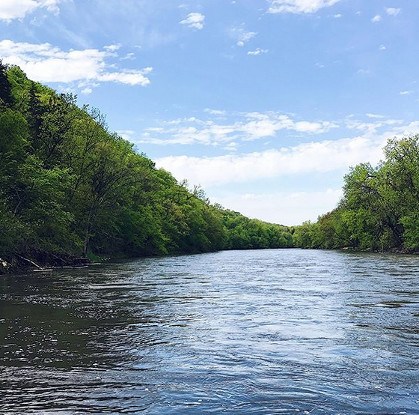The first settlers are thought to have arrived in Minnesota more than 10,000 years ago. They were followed by Europeans, who arrived some time in the 1600s. Some 200 years later, Minnesota became the first state to send troops to fight in the Civil War.
With such a rich history, it's no wonder that Minnesota is one of the most popular treasure hunting states in the Midwest. With a metal detector you can uncover Civil War artifacts. If you're particularly lucky, you may even stumble upon some of the buried treasure said to lie beneath Minnesota soil.
Laws
In Minnesota, only qualified archaeologists and members of the Minnesota Historical Society may use a metal detector on non-federal public land. This refers to riverbeds, state wildlife areas, and state parks.
As in all other states, metal detecting in Minnesota is regulated by the Archeological Resources Protection Act (ARPA). The ARPA forbids the removal of archaeological resources from federal lands without a permit. The removal of archaeological resources from Native American land is also prohibited. Treasure hunters may not excavate man-made objects suspected to be more than 100 years old.
Violating Minnesota's metal detecting laws can result in a hefty fine. In extreme cases, a prison sentence may be handed down. Regardless of the punishment, you would have to forfeit any items that you discovered if you get caught.
Best Metal Detecting Equipment
| Product | ||
|---|---|---|
| Metal Detector |  |
|
| Edge Digger |  |
|
| Pin-Pointer |  |
|
| Knee Pads |  |
Buried Treasure
Tales of buried treasure have been told in Minnesota since the onset of the Civil War. Below we will tell you about the most popular and most feasable tales.
Outlaw Treasure
A significant bounty is said to have been buried in the state by the notorious Ma Barker. According to legend, Ma Barker, along with Alvin Karpis and his gang, buried upwards of $100,000 in Minnesota. Some accounts put that number as high as $150,000. The treasure is rumored to be buried somewhere between Rochester and Chatfield. Its location is marked by a fence post. Barker is said to have stored the cash inside a metal box before burying it. If true, this makes it the perfect item to look for when metal detecting.There could also be treasure in Minnesota from the James-Younger Gang. During their 19th-century crime spree, Frank and Jesse James made frequent stops in Minnesota. Although no specific treasure has been spoken of, it's suspected that the James-Younger Gang buried much of their ill-gotten gains in the state.
The Joseph Winther Treasure
In Fairbault County, treasure hunters continue to search for what has become known as "the Joseph Winther treasure". It has long been said that a farmer by the name of Joseph Winther buried a collection of gold coins on his farm prior to his death. Not much is known about the location of his farm other than that it bordered the Blue Earth River. The value of the buried treasure has also not been established.

Ghost Towns
In the 1800s, mining towns sprung up across Minnesota. Built on unsustainable industries, many of these towns lasted only a couple of decades. By the 1960s, virtually all of the state's mining towns had been abandoned. Today, these ghost towns are popular spots for metal detecting. Some of the most rewarding Minnesota ghost towns are outlined below.
Mesaba
Mesaba was established at the beginning of the 20th century. This makes it younger than many other ghost towns in Minnesota. The town was home to Vivian Mine, Graham Mine, and Spring Lake Mine. With the combined iron production of these three mines, Mesaba enjoyed a brief period of prosperity. But the onset of World War I marked the beginning of the end for the town. During the war, mining gradually declined and Mesaba's population decreased. Despite a minor rejuvenation in the 1920s, the town was dissolved in 1947.
Sacramento
In 1857, gold was discovered in a creek by the Zumbro River. This spawned a minor gold rush and the town of Sacramento was formed. It gradually expanded from a modest mining camp into a town. Sacramento had its own post office and hotel, along with a series of saloons and general stores.
The town's gold eventually depleted to the point where mining was no longer profitable. When miners left Sacramento, they took its small business owners with them.
Conclusion
Minnesota has been inhabited for more than 10,000 years. Therefore it's no surprise that the state is loaded with treasure. In some cases, this treasure comes in the form of tools left behind by early settlers. In others, it comes in the form of coins buried by bandits during the Civil War. Admittedly, much of this treasure is protected by the Archaeological Resources Protection Act. However, Minnesota is home to a number of comparatively young ghost towns. In Mesaba, a town founded in the 1900s, you can stage excavations with minimal risk of violating the ARPA.
